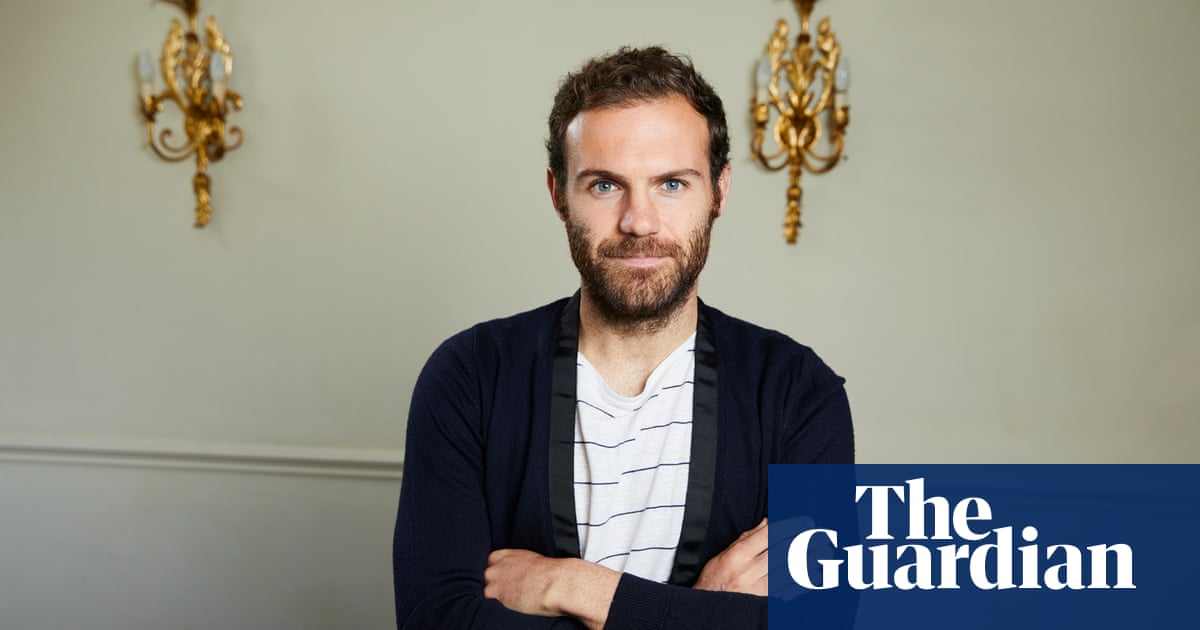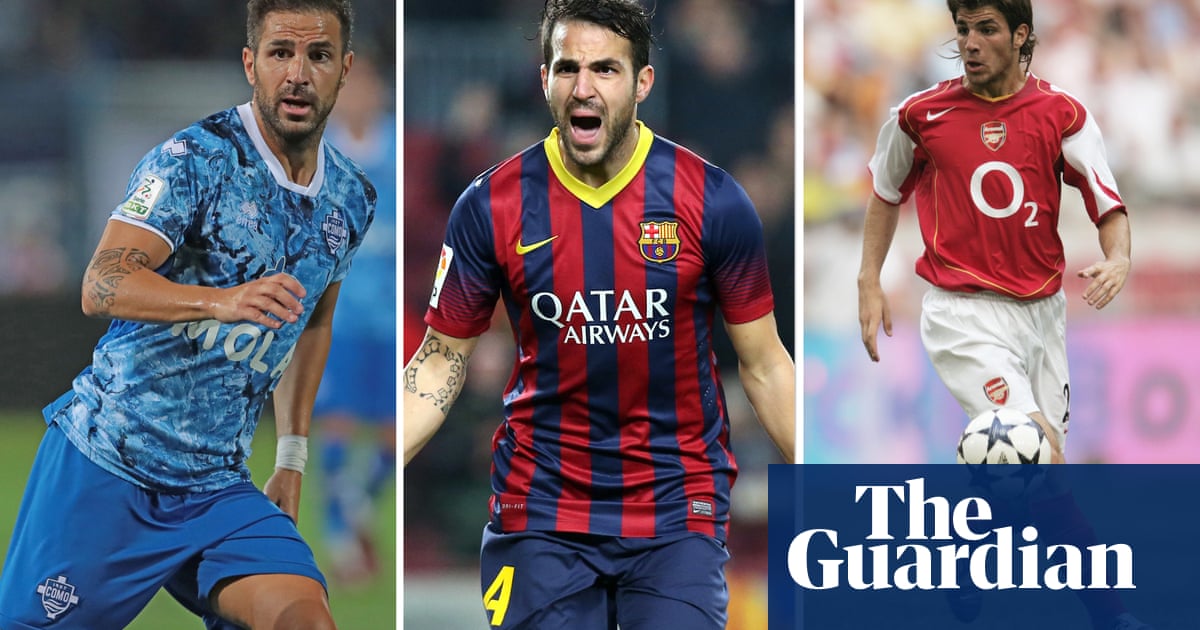
It is a bit of a cliche to describe the great Spanish footballer Juan Mata as an artist. But it does capture how his skill, imagination and intelligence have lit up grounds all over the world and seen him garlanded with honours including a World Cup winner’s medal. And in addition it’s also now literally true – off the pitch at least – as Mata prepares to take his place alongside the likes of Yayoi Kusama’s hallucinatory immersive environments and Ryan Gander’s conceptual interventions in the arts strand of this year’s Manchester international festival (MiF).
Mata is collaborating with the curator Hans Ulrich Obrist on a multi-part project called The Trequartista: Art and Football United, the first instalment of which will see Mata working with the German-Indian artist Tino Sehgal on a new piece of performance art that will open later this month at the National Football Museum in Manchester, and subsequently at the Whitworth Gallery in the city.
None of this should be that surprising. Mata has always had a hinterland. He set up the Common Goal movement that encourages footballers to donate 1% of their earnings to charities and has had work – photographs from the Manchester United tour to India that inspired Common Goal – exhibited at the National Football Museum before.
“I have always been inspired by and interested in creative people,” he says. “Of course that includes creative footballers, but it also means writers and actors and artists. Most of my energies are invested in my professional career, but when I have some time to myself I like to disconnect from football. Curiosity is important to me so it is not that surprising that I sometimes end up in art galleries.”
Just how curious Mata can be is quickly evident from the scene in front of me in a Berlin dance rehearsal studio. In the middle of the floor are four intertwined bodies being carefully arranged by Sehgal, who is based in the city. There is a trick cyclist, a freeform footballer, a violinist and a dancer who also sings. Among the tangle of limbs are also their props, and under different circumstances it could be seen as an unnervingly surreal traffic accident. As Sehgal makes his suggestions to the performers – “Are the handlebars in the way?”; “Can the ball be better tucked in to prevent the performer from cramping up?” – he holds a mobile phone from which he Zooms the scene to Mata, who is in Istanbul where he currently plays for Galatasaray.
“We had worked on some individual aspects before but it was great to see it done with all the elements,” says Mata. “Getting this far has been quite a journey for the performers. And also for me.”
Mata’s journey began when Obrist, director of the Serpentine Gallery in London and a revered networker, learned that Mata was following him on Instagram. “I’ve always been interested in bringing different fields into contact with art,” explains Obrist. “Music, architecture, literature, science. So why not football?” At the time, Mata was with Manchester United and the two men met up in the city. Obrist had some football background having worked in Milan in the early 1990s and as a longtime friend and colleague of the Turner prize-winning artist Douglas Gordon, who had produced the video work Zidane: A 21st-Century Portrait, focusing, with a fierce intensity, on the movements made by French midfielder Zinedine Zidane during a match.
Zidane was one of the great trequartistas – a position originating in Italian football between the midfield and the attack occupied by only the most technically able and imaginative of players. “These are the playmakers, the artists,” says Obrist. “They link everything together”. Mata himself fits this mould (although some would say he has been too often pushed out wide by coaches) and says these were “the players that made me fall in love with the game as a child. The position is seen less often in the modern game but we liked the idea of its creativity and the way it [links play], so we decided to bring together players with artists to make different sorts of connections.”
They agreed to find 11 players and 11 artists who would collaborate on a series of works, and the Trequartista project was born. Obrist introduced Mata to Sehgal and the writer Josh Willdigg, and together they have created the first work in the series, titled This Entry. Sehgal is best known for his “constructed situations” in which he peoples large spaces – Tate Modern’s Turbine Hall, the Guggenheim Rotunda in New York – with performers who transform the environment through improvised speech, movement and interaction.
His background is in dance and he said he became increasingly aware of the link between the endless tiny micro adjustments of weight, shape, balance and direction made by footballers when playing and related movements in choreography and dance. “I love the idea that these movements have meaning and purpose, literally moving towards a goal,” Sehgal says. “The players are in constant communication via language, but also via the ball, via their positioning and via their training and planning. For someone who is a complete dance nerd, this was full of choreographic subtleties. It is about both cerebral decisions and physical decisions. It’s also skill-based and requires extensive training and preparation. Even if you can make the right decision, if you don’t have the ability it doesn’t really help. Football is a combination of cognitive, physical and psychological skill sets. And all of that is very close to the things I have always aspired to in my work.”
Sehgal has assembled three sets of four multi-skilled, and also multinational, performers who will rotate to give three-and-a-half-hour performances of the finished version of This Entry in Manchester. The piece is a departure for Sehgal who is known as “the artist without objects”.
“I have always been primarily interested in interactions purely between humans, but we are the mammal who is best at dealing with external objects, and so I now wanted to integrate that into my work.” So why a bicycle, a football and a violin? He laughs. “I’m an artist. I don’t have to explain things like that.” But he is happy to talk about how they are all iconic objects and shapes in their own way; ones that fuse with the body when used. “They become like an extension of the body, and it was an interesting challenge to put that to aesthetic use. And of course they are all great fun.”
There is indeed much laughter in the rehearsal room as the performers run through various exercises and ideas. Mata, too, talks about the importance of joy in football, even at the top level. “Of course the game is more data-based now and there is an attempt to leave less to chance,” he says. “But we shouldn’t forget the essence of it. Players that are really comfortable with the ball and can make a difference with their technical quality, their imagination and creativity. That’s why people instantly love the game when they are kids. There are many ways of winning and for me success can also be measured in the way that people play and in the way that makes fans happy.”
The Trequartista series will continue in Manchester until 2025 with projects inside and outside galleries. The next pairing of artists and footballers will be announced later in the summer. “Overall we will have both male and female footballers, all of whom represent what we think the trequartista stands for,” says Mata.
Sehgal says he has relished entering a new world. “There used to be, pretty much, one public which was fed by one media and everyone knew roughly what was going on. Now there are dozens or hundreds of publics – some of them very large – being fed by a huge variety of sources of information. Maybe this differentiation is good for society but it also breeds echo chambers. Building bridges between worlds, especially when you have bicycles and footballs and so on, is great fun. But it can also be important. And those things can work alongside each other: art and sport; football and dance; fun and profundity. None of these things need to be mutually exclusive.”












